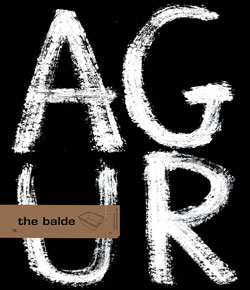blast vorticism!
Vorticism was an art movement at the beginning of the 20th century and though it lasted less than three years, it was the most significant art movement that came out of Britain.
At a time when all the “isms” were based in Paris, this special new movement was born in the Rebel Art Centre. With Wyndham Lewis as its central figure and its roots embedded in Futurism and Cubism, the movement forged its own identity. It managed this to a large extent by expressing a mistrust of Statism and machinery whereas Futurism and Cubism embraced dynamism and machines.
The Vorticists used disharmonious lines and colours and the characteristic of using these lines to direct the viewer’s eye towards the centre of the canvas, the spring of emotion in the work, was the source of the name of the movement. Erza Pound became interested in the movement and was the one who baptized it with the
name ¨Vorticist¨. Some of the participant artists were William Roberts, Edward Wadworth, Gaudier-Brzeska, Jacob Epstein, Helen Saundres,... The photographer Alvin Langdon-Coburn also contributed to the movement and he invented ¨vortographes¨. In 1915, the Vorticists decided to publish a magazine, and Blast was the name chosen, but they only managed to publish two issues. Nonetheless, the publishing of their work and writings along with contributions by Ezra Pound and T.S. Elliot in those two issues caused a
major revolution. Along with their Vorticist Manifest and works of art, the use of typography was the magazine’s highpoint. The use of innovative adventurous layout design and typography had a huge influence on design
in the 20s and 30s.
At a time when all the “isms” were based in Paris, this special new movement was born in the Rebel Art Centre. With Wyndham Lewis as its central figure and its roots embedded in Futurism and Cubism, the movement forged its own identity. It managed this to a large extent by expressing a mistrust of Statism and machinery whereas Futurism and Cubism embraced dynamism and machines.
The Vorticists used disharmonious lines and colours and the characteristic of using these lines to direct the viewer’s eye towards the centre of the canvas, the spring of emotion in the work, was the source of the name of the movement. Erza Pound became interested in the movement and was the one who baptized it with the
name ¨Vorticist¨. Some of the participant artists were William Roberts, Edward Wadworth, Gaudier-Brzeska, Jacob Epstein, Helen Saundres,... The photographer Alvin Langdon-Coburn also contributed to the movement and he invented ¨vortographes¨. In 1915, the Vorticists decided to publish a magazine, and Blast was the name chosen, but they only managed to publish two issues. Nonetheless, the publishing of their work and writings along with contributions by Ezra Pound and T.S. Elliot in those two issues caused a
major revolution. Along with their Vorticist Manifest and works of art, the use of typography was the magazine’s highpoint. The use of innovative adventurous layout design and typography had a huge influence on design
in the 20s and 30s.




